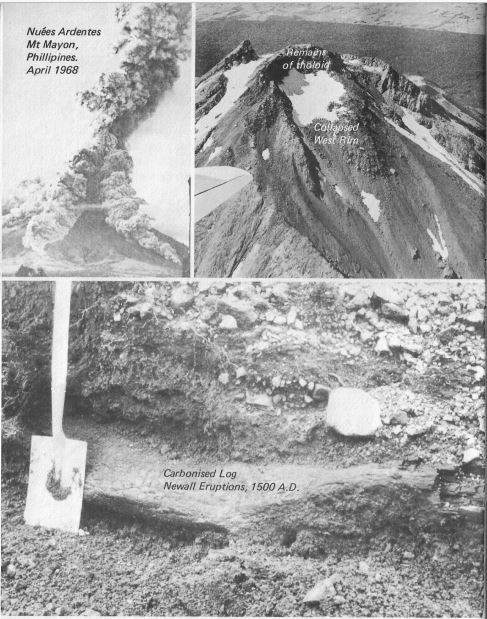PG:7
also swept 3 k III northwards across the western slopes of the
Pouakai Rang' (Druce J 970, p.S3). This was followed 150 years
later by the .ruption of the Burrell Lapilli which was an air-fall
pumice (Topping 1972). Maori ovens (umu) have been found
beneath both these eruptives. About 450 years ago the present
summit of Mount Egmont, a tholoid (volcanic dome within a
crater) was also emplaced. The last eruption on Egmont occurred
about 1750 A.D.
In the intervals between the latest short-lived eruptions,
Egmont has also suffered severe erosion probably due to heavy
rainstorms.
The loosely jointed lava flows, some resting on
loose gravel, are relatively unstable and at least 11 debris flows
have originated over the last 400 years from minor lava flow
collapses. The western crater rim was the source for a number
of these flows. Following the 1500 A.D. eruptions, debris
washed down Stony River in a large flood covering 15 km2 of
what is now valuable farmland in the Okato district. The latest
debris flow occurred about 100 years ago and reduced the
native bush to ground level from Pyramid Stream to the Park
boundary.
Indeed, Egmont is no extinct volcano but merely an
active one in a present-day state of quiescence.
